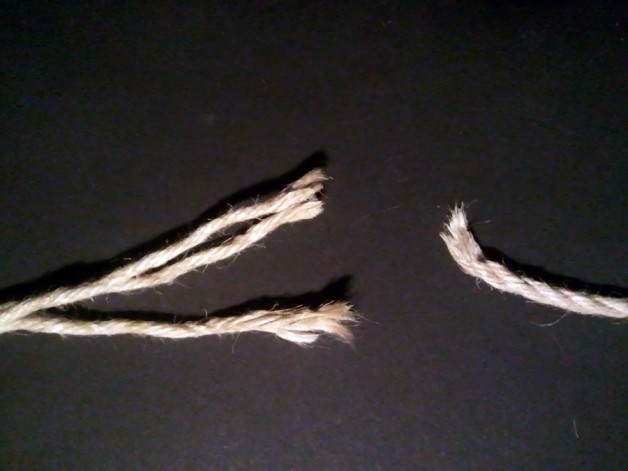Bob Ropemarks recently had an unfortunate incident at a big show: a rope broke and his model fell. Luckily, no great harm was done but there might be some lessons to be drawn. I applaud Bob for making an account of the incident public.
As Bob points out, the most likely cause was the sawing action of rope against rope as he lifted his model into suspension. His model is very slim with a figure to die for but is extremely tall so is a heavier working load than the typical feather-weight Japanese working load. This combined with a high stress lift and the sawing action were enough to break the rope. He speculates that the tooth of the rope contributed to the sawing action, whereas a smoother rope might not have caused so much friction.
In my opinion, this might well be true but it is not the only variable. The strength of the rope itself and the fibres that make it up will be a major factor. Yes, the real culprit is friction but it could be that oiling and waxing rope has an important function too. It doesn’t matter how good the materials use to build an car engine, without lubricant it will be destroyed in seconds. It would seem logical that oiling and waxing rope reduces friction. This means less likelihood of damage to the rope and less resistance on running rope, so less effort for suspension lifts. Win, win!
Even if you are as meticulous as Bob about checking and replacing ropes, these things can happen. Make no mistake, suspension is edge play and ranks with extreme sports for risk. Check your ropes, make sure they are up to the job and maintain them. A lot of the thinner Japanese rope is designed for tiny sub-50kg models and has a very short life-span, so bear this in mind!

